Cellulite
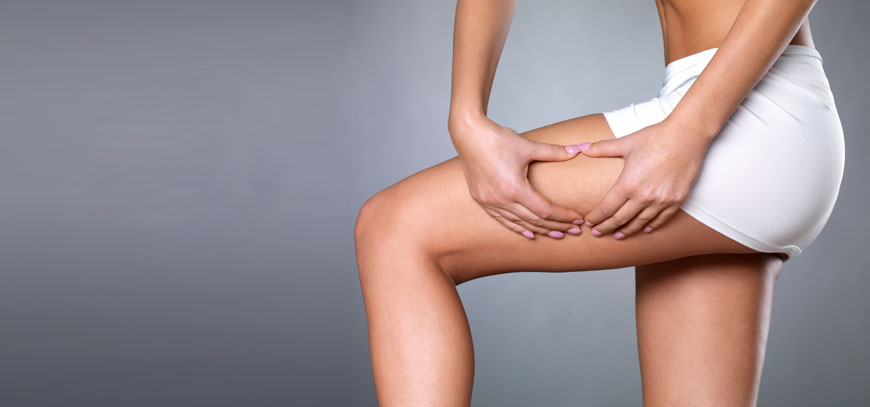
Cellulite refers to the accumulation of fat cells that exert pressure on the connective tissue beneath the skin's surface. This condition typically manifests in areas like the thighs, stomach, and buttocks. The appearance of cellulite is characterized by a lumpy, puckered, or dimpled texture on the skin, which can be a source of concern for many individuals.
What is cellulite?
Cellulite, scientifically termed adiposis edematosa, pertains to accumulations of fatty deposits that exert pressure on the underlying connective tissue, causing distinctive dimpled or puckered appearances on the skin's surface. Commonly found on the thighs, stomach, and buttocks, cellulite can lead to a lumpy texture, sparking aesthetic concerns for many individuals.
Cellulite vs Lipedema
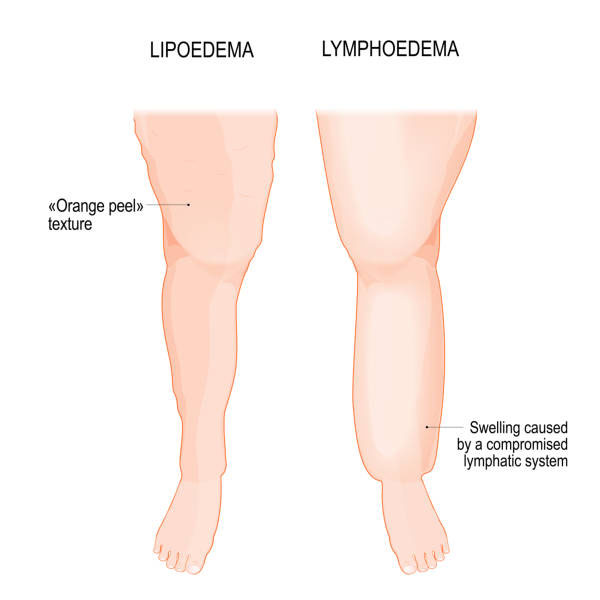
Lipedema stands as a medical condition marked by the abnormal accumulation of excess fat predominantly in the lower regions of the body, primarily affecting the buttocks, thighs, and calves, with occasional involvement of the upper arms. Unlike cellulite, lipedema does not extend to the hands or feet.
One of the key distinguishing features of lipedema is the heightened sensitivity of the skin. Those with lipedema may experience discomfort, swelling, cold sensations, and easy bruising. The texture of the affected skin often undergoes noticeable changes, resembling the appearance of cottage cheese, oatmeal, or an orange peel. Over time, as lipedema progresses, it may even impair a person's ability to walk.
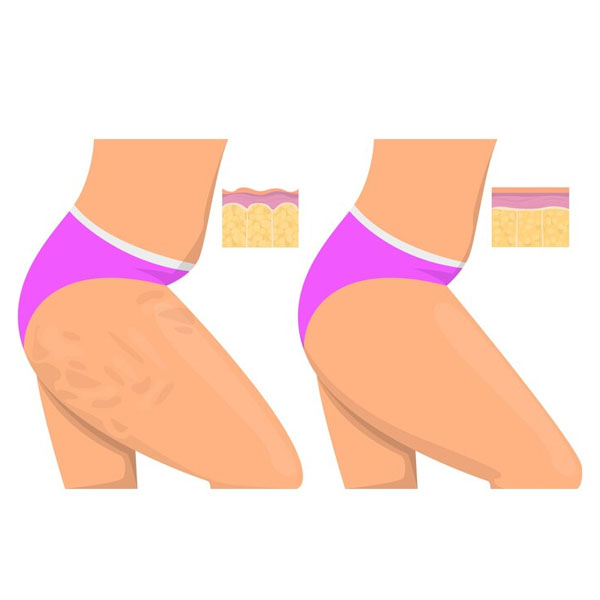
On the other hand, cellulite, being a cosmetic issue, primarily manifests as a dimpled or puckered appearance on the skin's surface. Most commonly found on the stomach, buttocks, and thighs, cellulite may indeed resemble the texture of cottage cheese, oatmeal, or an orange peel. However, unlike lipedema, cellulite itself does not cause physical discomfort or pain.
While lipedema and cellulite may share certain visual similarities, they represent distinct conditions with varying effects on both physical well-being and aesthetic concerns.
What is the main cause of cellulite?
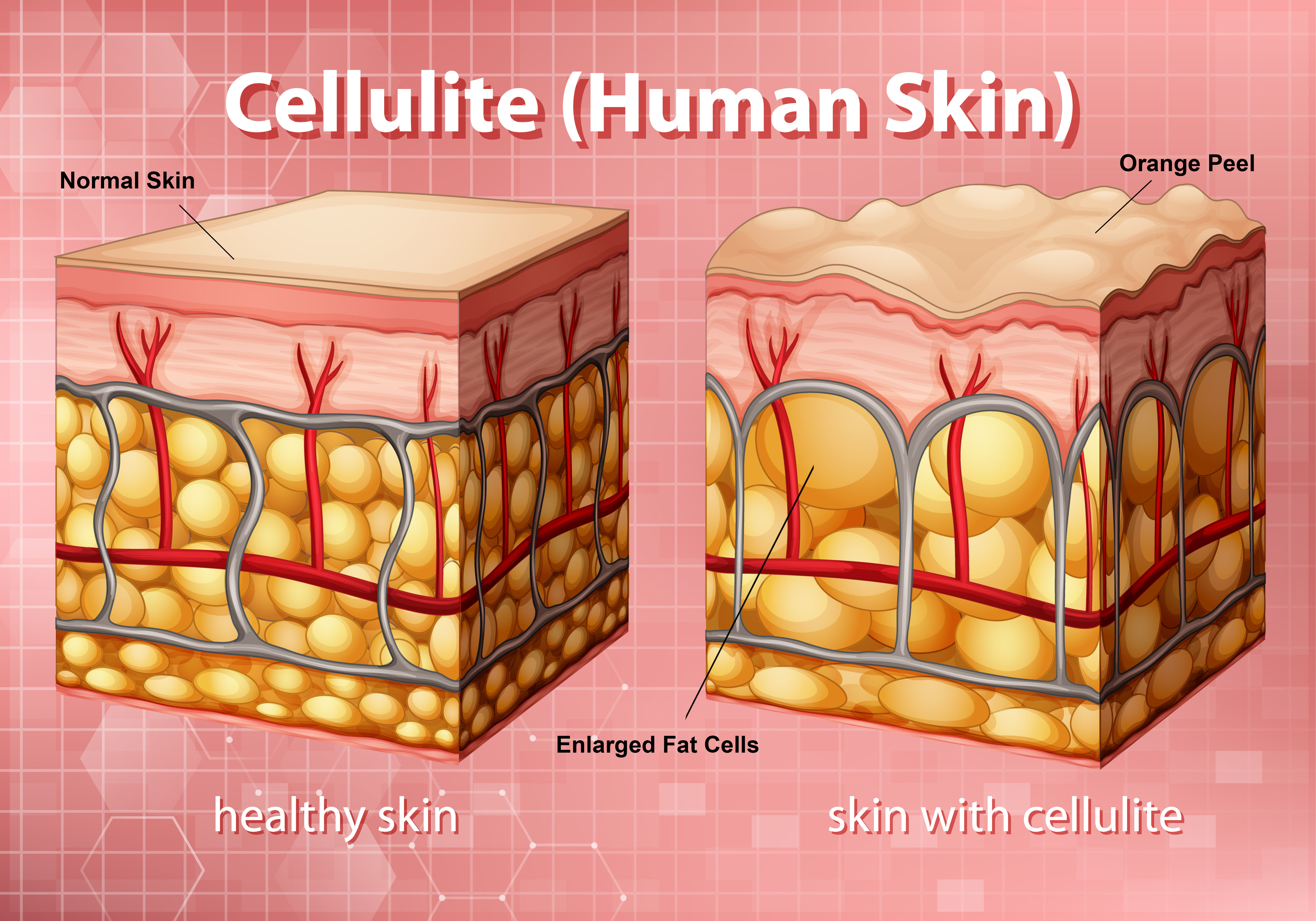
The exact factors contributing to the development of cellulite remain a subject of uncertainty. Cellulite emerges when the fibrous bands connecting the skin to the underlying muscles undergo irregular tightening. As a result, the skin is pulled downwards, while the layer of fat beneath it is pushed upwards, leading to the characteristic puckering appearance.
The reason why cellulite is more frequently observed in women compared to men remains an area of investigation. One theory suggests that the arrangement of the connective bands between the skin, subcutaneous tissue (hypodermis), and deep muscle layers may play a role. In men, these fibers crisscross in a different pattern, while in women, they run parallel and at equal distances from one another. This parallel configuration of bands may result in more pronounced puckering, unlike the crisscross pattern seen in men.
Additionally, the hormone estrogen is proposed as another potential factor influencing cellulite formation. It is observed that cellulite tends to develop when women experience elevated levels of estrogen, which typically occurs during adolescence or pregnancy. This hormonal link is under investigation to better understand its impact on cellulite development.
While the precise causes of cellulite remain elusive, research is ongoing to explore the role of fibrous bands' structure and the influence of hormones like estrogen in the formation of this common skin condition.
Can exercise reduce the impact of cellulite?
Engaging in regular exercise can be beneficial in enhancing the appearance of cellulite. When you exercise regularly, it promotes an increase in muscle mass, effectively acting as a cellulite treatment process. Additionally, exercise stimulates improved blood circulation to specific regions of the body, thereby accelerating the process of fat loss. Embracing the following physical activities can particularly act as cellulite treatment process:
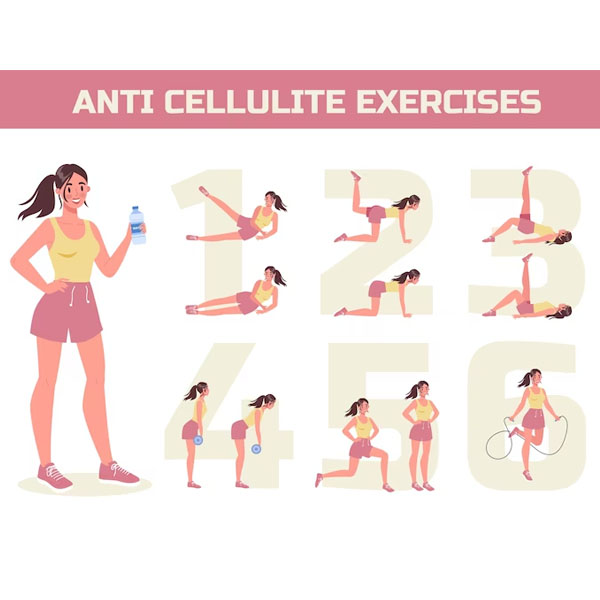
- Jogging or Running: Incorporating running or jogging into your fitness routine can contribute to toning muscles and reducing the visibility of cellulite.
- Cycling: Regular cycling sessions can be an excellent way to target cellulite, as it focuses on the lower body and encourages fat burning in those areas.
- Resistance Training: Including resistance training exercises in your workout regimen, such as weight lifting or bodyweight exercises, helps build muscle strength and tightens the skin, leading to a smoother appearance.
By consistently engaging in these activities, you can effectively address cellulite concerns and work towards achieving firmer, more toned skin.
How is cellulite treatment performed?
Various medical procedures are available to address cellulite, and your doctor or dermatologist can guide you toward the most suitable option for your needs. Here are some of the medical treatments:
- Cryolipolysis, known as CoolSculpting, is a noninvasive technique that freezes fat cells beneath the skin, causing them to break down and be absorbed by the body. Multiple sessions may be required to reduce an inch of fat, with noticeable results emerging over three to four months.
- Ultrasound employs sound waves to target and eliminate fat in areas like the abdomen and thighs. Results typically appear within two to three months, and combining ultrasound with other cellulite treatments might be recommended.
- Cellfina is a nonsurgical procedure that involves breaking up tough bands under the skin using a needle to eliminate cellulite on the thighs and buttocks. Results can manifest in as little as three days and last up to three years.
- Acoustic wave therapy stimulates collagen production by vibrating connective tissue in cellulite-prone areas, improving skin texture and elasticity. Multiple sessions are necessary to observe results.
- Laser and radiofrequency treatments combine technologies like radiofrequency, infrared light, and diode laser energy to treat cellulite. Cellulaze, a specific laser treatment, targets tough bands under the skin, yielding improvements after several sessions.
- Vacuum-assisted precise tissue release employs a device with small blades to cut tough bands under the skin, allowing tissue to move upward and reduce dimpled skin. Results can endure for up to three years.
- Carboxytherapy involves injecting carbon dioxide just below the skin's surface to boost blood flow and potentially reduce cellulite's appearance. Discomfort and temporary bruising may occur, and noticeable results might emerge after 7 to 10 sessions.
- Microdermabrasion exfoliates skin using particles like aluminum oxide or salt crystals, encouraging new skin cell growth. Multiple sessions are typically needed.
- Endermologie, a spa treatment, entails deep massage combined with vacuum-like tools to lift the skin. Results require several sessions and can last up to 12 months, sometimes accompanied by bruising.
What is the cellulite treatment cost in India?
The cellulite treatment cost in India varies depending on the specific area to be treated, with prices ranging from ₹70,000 to ₹300,000. If you opt for a 0.3 percent retinol cream, you can expect to spend approximately ₹1,000 for a 150ml product. On the other hand, ultrasound treatments, which can be effective in addressing cellulite, typically come with a price tag ranging from ₹50,000 to ₹120,000.
It's essential to note that the expenses associated with cellulite treatment cost can vary based on factors like the type of procedure chosen, the location of the treatment center, and the extent of cellulite to be addressed. Additionally, the cost of products such as retinol cream and specialized treatments like ultrasound may also differ based on the brand and quality. As with any medical or cosmetic procedure, it's crucial to consult with a qualified professional to determine the most suitable treatment and associated costs for your specific needs.
Frequently Asked Questions:
The results of cellulite treatment can vary from person to person. While some individuals may experience long-lasting improvements, others may require maintenance sessions to sustain the desired outcomes. Leading a healthy lifestyle, including regular exercise and a balanced diet, can also help prolong the benefits of cellulite treatment.
Cellulite treatment methods are generally considered safe; however, some individuals may experience mild side effects such as temporary redness, swelling, or bruising at the treatment site. These effects typically subside within a few days. It's crucial to consult with a qualified practitioner to discuss any potential risks and suitable treatment options for your specific condition.
The number of cellulite treatment sessions needed to achieve visible results can vary based on individual factors, including the severity of cellulite and the chosen treatment method. On average, patients may require multiple sessions, often spaced several weeks apart, to see optimal improvements.
While cellulite treatment can significantly improve the appearance of cellulite, complete elimination may not always be achievable. The goal of cellulite treatment is typically to minimize the visibility of cellulite and enhance skin texture, rather than eliminate it entirely.
It's essential to disclose any medical conditions and medications you are taking to your chosen healthcare provider before undergoing cellulite treatment. Certain medical conditions or medications may influence the choice of treatment or require adjustments to ensure safety and effectiveness. Your healthcare professional will assess your individual situation and recommend suitable treatment options accordingly.
Procedure Time:
- 30-45 minutes
Anesthesia:
- None
Recovery:
- No down time
Number of sessions:
- 4-6 session
Results:
• Seen in 1-2 sessions
Duration of results:
• Permanent improvement with 95% success rate
Risks & complications:
• Mild redness, itching or swelling
* Individual results and reactions may vary.
